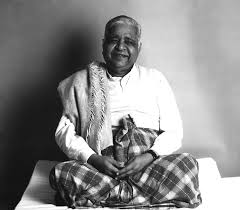In recent years, mindfulness in Switzerland has become one of the most sought-after practices for those who wish to reduce stress, deal with anxiety and improve their daily well-being. In many contexts - therapeutic, educational, business - it is referred to as "presence," "mindfulness," "attention to the present moment."
But what does it really mean to practice mindfulness? Where does it come from? And how can we concretely integrate it into daily life?
In this article I want to share with you the authentic roots of mindfulness, some practical exercises, personal reflections as a therapist, and why it can be a valuable ally in difficult times.
 Mindfulness for anxiety has become a valuable tool: it helps to get out of the automatic pilot, defuse thought spirals, and regain a space of inner freedom.
Even in hospitals, schools and psychotherapy tracks, mindfulness in Switzerland is now recognized as an effective practice, scientifically validated, and compatible with different therapeutic orientations.
Jon Kabat-Zinn, a physician and molecular biologist, was among the first to introduce mindfulness in therapeutic settings, freeing it from any religious connotations but keeping its heart intact. In his seminal book he writes:
"Mindfulness means paying attention in a particular way: with intention, in the present moment, and in a nonjudgmental way."
(J. Kabat-Zinn, "Living Moment by Moment.")
Mindfulness for anxiety has become a valuable tool: it helps to get out of the automatic pilot, defuse thought spirals, and regain a space of inner freedom.
Even in hospitals, schools and psychotherapy tracks, mindfulness in Switzerland is now recognized as an effective practice, scientifically validated, and compatible with different therapeutic orientations.
Jon Kabat-Zinn, a physician and molecular biologist, was among the first to introduce mindfulness in therapeutic settings, freeing it from any religious connotations but keeping its heart intact. In his seminal book he writes:
"Mindfulness means paying attention in a particular way: with intention, in the present moment, and in a nonjudgmental way."
(J. Kabat-Zinn, "Living Moment by Moment.")  "Vipassana is not a belief system. It is a process of looking inward, carefully, to see things as they really are, and not as we want them to be."
(from "The Practice of Mindfulness," Astrolabe)
Many of the mindfulness clinical protocols (MBSR, MBCT) are directly inspired by this form of meditation. The difference? Mindfulness is a secularized form, accessible to anyone, regardless of religious or philosophical affiliations.
In therapy, drawing on the wisdom of Vipassana does not mean "becoming meditators," but learning a mindset of observation, acceptance, and freedom.
"Vipassana is not a belief system. It is a process of looking inward, carefully, to see things as they really are, and not as we want them to be."
(from "The Practice of Mindfulness," Astrolabe)
Many of the mindfulness clinical protocols (MBSR, MBCT) are directly inspired by this form of meditation. The difference? Mindfulness is a secularized form, accessible to anyone, regardless of religious or philosophical affiliations.
In therapy, drawing on the wisdom of Vipassana does not mean "becoming meditators," but learning a mindset of observation, acceptance, and freedom.
Mindfulness in Switzerland: a growing need
Living in Switzerland offers many opportunities but also intense rhythms, multicultural contexts, professional pressures and sometimes a sense of loneliness. In clinical tracks with Ticinesians and Italians living in Switzerland, I often find that the problem is not "doing too much," but not being able to stop. Mindfulness for anxiety has become a valuable tool: it helps to get out of the automatic pilot, defuse thought spirals, and regain a space of inner freedom.
Even in hospitals, schools and psychotherapy tracks, mindfulness in Switzerland is now recognized as an effective practice, scientifically validated, and compatible with different therapeutic orientations.
Jon Kabat-Zinn, a physician and molecular biologist, was among the first to introduce mindfulness in therapeutic settings, freeing it from any religious connotations but keeping its heart intact. In his seminal book he writes:
"Mindfulness means paying attention in a particular way: with intention, in the present moment, and in a nonjudgmental way."
(J. Kabat-Zinn, "Living Moment by Moment.")
Mindfulness for anxiety has become a valuable tool: it helps to get out of the automatic pilot, defuse thought spirals, and regain a space of inner freedom.
Even in hospitals, schools and psychotherapy tracks, mindfulness in Switzerland is now recognized as an effective practice, scientifically validated, and compatible with different therapeutic orientations.
Jon Kabat-Zinn, a physician and molecular biologist, was among the first to introduce mindfulness in therapeutic settings, freeing it from any religious connotations but keeping its heart intact. In his seminal book he writes:
"Mindfulness means paying attention in a particular way: with intention, in the present moment, and in a nonjudgmental way."
(J. Kabat-Zinn, "Living Moment by Moment.") Vipassana: the root of mindfulness
To fully understand mindfulness, it is important to remember that it does not originate in a laboratory, but from a millennia-old tradition: that of Vipassana meditation, which has been practiced for centuries in Buddhist countries such as Burma, Sri Lanka, Thailand, and India. Vipassana literally means "deep vision" or "looking inward with clarity." It is a mental training based on direct observation of what is happening-body, sensations, emotions, thoughts-moment by moment, without attachment or aversion. In the words of Bhante Henepola Gunaratana, one of the best-known masters of Vipassana: "Vipassana is not a belief system. It is a process of looking inward, carefully, to see things as they really are, and not as we want them to be."
(from "The Practice of Mindfulness," Astrolabe)
Many of the mindfulness clinical protocols (MBSR, MBCT) are directly inspired by this form of meditation. The difference? Mindfulness is a secularized form, accessible to anyone, regardless of religious or philosophical affiliations.
In therapy, drawing on the wisdom of Vipassana does not mean "becoming meditators," but learning a mindset of observation, acceptance, and freedom.
"Vipassana is not a belief system. It is a process of looking inward, carefully, to see things as they really are, and not as we want them to be."
(from "The Practice of Mindfulness," Astrolabe)
Many of the mindfulness clinical protocols (MBSR, MBCT) are directly inspired by this form of meditation. The difference? Mindfulness is a secularized form, accessible to anyone, regardless of religious or philosophical affiliations.
In therapy, drawing on the wisdom of Vipassana does not mean "becoming meditators," but learning a mindset of observation, acceptance, and freedom.
Practical mindfulness exercises: get started now
Practicing mindfulness does not require long hours or trips to the East. All it takes is five minutes, a little curiosity, and a willingness to really "stop."1. Conscious breathing (3 minutes)
Find a comfortable position. Close your eyes. Bring your attention to the breath. Do not try to modify it. Just observe: air coming in, air going out. Where do you feel it? Nostrils, chest, belly? When the mind wanders - and it will - bring it back to the breath, gently. This exercise is useful for:- Calming anxiety
- Back to the body
- Create a pause between stimulus and reaction
2. Body scan (body scan)
Lie down or sit down. Bring attention to one part of the body at a time: feet, ankles, legs...up to the head. Notice the sensations, the temperature, the contact. This exercise trains awareness and reduces stress-related muscle tension.3. Mindful eating (mindful eating)
Take a fruit or a cookie. Observe it. Smell it. Touch it. Taste it slowly. Chew it carefully. Notice the thoughts, the automatic reactions, the temptation to distract yourself. A way to slow down, but also to discover unconscious habits related to food and the body.Mindfulness for anxiety: what the science says
Numerous research shows that regular mindfulness practice has measurable effects on:- Prefrontal cortex: improves attention, decision-making, emotional regulation
- Amygdala: reduces stress reactivity
- Autonomic nervous system: promotes a parasympathetic state (rest and digestion)
A clinical experience of mine
I remember a patient, "Clare," who lived in Geneva and worked in an extremely competitive environment. Anxiety manifested as insomnia, muscle tension, obsessive thoughts. They had suggested yoga, herbal teas, supplements - but nothing worked. We started with simple mindfulness exercises, 5 minutes a day. At first she was frustrated. "I can't sit still." But with consistency, she began to notice that she could observe thoughts without believing them too much. She slept better. Most importantly, she said, "I feel I have a space inside me again."Mindfulness and psychotherapy: an effective integration
In my clinical practice I often integrate mindfulness meditation with other approaches: EMDR, hypnosis, brief psychotherapy. It is not about "healing with meditation," but offering an experiential tool for:- Observe without reacting
- Feeling without judging
- Staying present even in pain
Mindfulness in Switzerland: how to get started
You can start with:- An online psychological journey in Italian, with certified therapists in Switzerland
- Small daily exercises
- Books such as "Wherever you go, you are already there" (Kabat-Zinn).
- Meditation app (best guided by human voice, not automated)
When mindfulness is not enough
Mindfulness is a tool, not a magic wand. If:- You feel overwhelmed
- You have experienced a major trauma
- Anxiety is chronic or disabling
